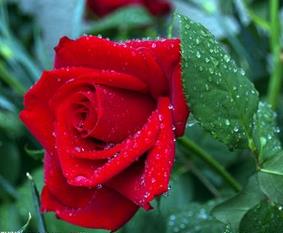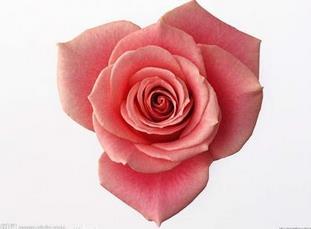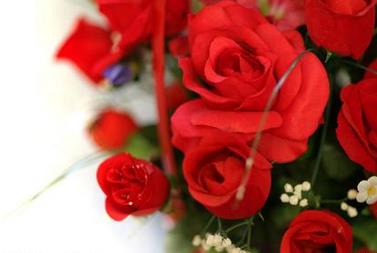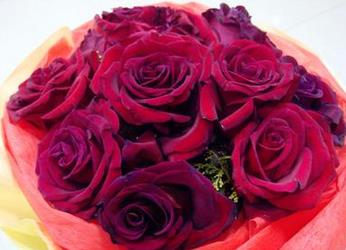Analysis on the main points of Rose planting techniques
"Rose" is a perennial woody plant with a long production cycle. It can be harvested for 2-3 years in one planting and 5-6 years in grafted seedlings. In order to obtain the high quality, high yield and high benefit of cut flowers, the soil for planting "rose" must have good physical and chemical properties during cultivation. Let's take a look at the rose planting techniques in detail.
Rose planting technique
The main results are as follows: 1. Watered roses are more resistant to drought than wet. Pay attention to irrigation in the dry season. Drought will reduce the yield and quality of flowers. Waterlogging and drainage should be prevented in the rainy season to avoid rotting roots. If the weather is fine in spring, summer and autumn, you can water it every other day. Generally speaking, there should be an adequate supply of fertilizer and water from bud germination to 54 centimeters long. Potted roses can be watered every 2 days at the initial stage of growth, and can be watered again after the pot soil is dried before and after flowering. Water should be controlled during the flowering of roses.

2. Fertilizing roses like manure. When potted, do not mix fertilizer into the transplanted culture soil, but add compost. Potted roses should be changed every two years, and the new pot is about 6-7 meters larger than the old one. When changing the pot, remove the old soil of 1-2-1-3, and remove some of the entangled roots.
3. Pruning and pruning roses are perennial flowers. After flowering, pruning and pruning should be carried out in order to maintain good plant shape and growth potential, cut off the length of flowering branches 1 / 2, and cut off withered branches, diseased branches, overgrown branches and intertwined branches together. after moderate pruning, roses will grow new branches, bud will grow on the new branches, and blossom again.

Cultivation methods and colonization of rose planting techniques
The broken branch cultivation method is mostly used in the production of "rose". The cultivation method is single-row and double-row cultivation, plant spacing 12cm, row spacing 50cm, planting 5000 trees per mu. The cultivation in greenhouse can be planted all the year round, and it can be planted in a straight line when planting to ensure that the seedlings are straight and beneficial to management. The planting depth is slightly deeper than the planting depth, but the soil should not exceed the main bud of the seedling. The slow seedling period of modern industrial production is short and the survival is fast.
After planting, pour enough root water in time, pay attention to shading and cooling and spray water to the leaves when planting in high temperature weather. Fully ensure that the root soil and topsoil are moist within a week after planting, spray water on the leaves during the day, and properly shade; gradually reduce the amount of foliar watering after 7 days, but keep the topsoil moist, and spray fungicides such as carbendazim or chlorothalonil to control the disease; after 15 days, gradually reduce the amount of soil watering, and then timely watering according to soil dry and wet conditions, keep the soil moist, and begin to use drip irrigation system. Enter the normal management after 30 days.

Cultivation Environment requirements of Rose planting techniques
The main results are as follows: 1. Soil planting soil requires loose and aerated soil, rich in organic matter, slightly acidic and aggregate structure.
2. The suitable temperature for rose growth is 22-25 degrees per day, no more than 35 degrees, and 12-15 degrees at night. High temperature (≧ 30 ℃) will cause temporary wilting, although it will not die, but the plant will have physiological disorder, seriously affect the growth, and have a great impact on the growth and development of the next stage. At the same time, the number of petals will decrease and reveal flowers will be formed.
3. Light rose is native to temperate zone, likes sunshine and grows poorly in shade. It requires more than 6 hours of light every day to grow and blossom normally, but it can be reduced to 4-5 hours in summer high temperature season.
4. The humidity and relative humidity should be 65% and 70%. Low humidity (≦ 40%) affects flower color, even causes scorch of outer petals, and is suitable for the occurrence and spread of red spiders and Lepidoptera pests.

Propagation methods of Rose planting techniques
Roses are mainly propagated by ramets, and they can also be propagated by pressing and cutting.
One year before ramet propagation, sufficient fertilizer and watering should be applied near the rhizosphere of the mother plant, while keeping the soil loose and moist, and promoting a large number of roots to sprout. Because the rose has a strong tillering ability, the mother branch is easy to wither after each new branch, so the shoots near the rhizosphere must be transplanted to other places in time, so that the mother branch can still grow vigorously. Therefore, from November to December every year, after the defoliation of the plant, or when the bud just sprouts in February of the following year, new plants with strong growth next to the mother plant can be dug from the big flower stump, with 2 or 3 stems in each cluster, and planted separately with roots. After planting, the stem was cut off from the 20~25cm above the soil surface and cultivated for 2-3 years to blossom in clusters.

Striping is propagated in the plum rain season from June to August every year, and the sturdy branches of the same year are selected and bent into the soil. After being cut into the soil, the soil is embedded in the wound and fixed with a bamboo fork or tree branch, so that the tip of the branch is exposed to the ground and keep the soil moist. It can take root in 2 to 3 months, and it can be separated from the mother plant in the next spring and planted separately.
Before sprouting in early spring, one-year-old branches with strong growth and no diseases and insect pests were selected, cut into 20cm cuttings, and obliquely inserted into the cuttings made of Xinhe sand, with the depth of 12~14cm, compacted and watered, often keeping the temperature of the sand bed, rooting after about 30 days, and transplanting after germination. It is easy for the sand bed to heal and take root, but it needs to be planted in the sunny part of the greenhouse or in the field, and the management work should be meticulous. The cuttings of young shoots are generally carried out in the rainy season, and the semi-mature branches are cut, which are about 20cm in the middle and lower, with 2 or 3 nodes and buds on the top, and are obliquely inserted in the soil, compacted and watered, and transplanted after rooting and sprouting, while the old branches are mostly planted in the growing season from September to November.
Striping is propagated in the plum rain season from June to August every year, and the sturdy branches of the same year are selected and bent into the soil. After being cut into the soil, the soil is embedded in the wound and fixed with a bamboo fork or tree branch, so that the tip of the branch is exposed to the ground and keep the soil moist. It can take root in 2 to 3 months, and it can be separated from the mother plant in the next spring and planted separately.
Before sprouting in early spring, one-year-old branches with strong growth and no diseases and insect pests were selected, cut into 20cm cuttings, and obliquely inserted into the cuttings made of Xinhe sand, with the depth of 12~14cm, compacted and watered, often keeping the temperature of the sand bed, rooting after about 30 days, and transplanting after germination. It is easy for the sand bed to heal and take root, but it needs to be planted in the sunny part of the greenhouse or in the field, and the management work should be meticulous. The cuttings of young shoots are generally carried out in the rainy season, and the semi-mature branches are cut, which are about 20cm in the middle and lower, with 2 or 3 nodes and buds on the top, and are obliquely inserted in the soil, compacted and watered, and transplanted after rooting and sprouting, while the old branches are mostly planted in the growing season from September to November.
Related
- Wuhan Hospital Iron Tree Blooming Result Was Instantly Frightened by the Gardener Master
- Which variety of camellia is the most fragrant and best? Which one do you like best?
- What is the small blue coat, the breeding methods and matters needing attention of the succulent plant
- Dormancy time and maintenance management of succulent plants during dormancy
- Minas succulent how to raise, Minas succulent plant pictures
- What are the varieties of winter succulent plants
- How to raise succulent plants in twelve rolls? let's take a look at some experience of breeding twelve rolls.
- Attention should be paid to water control for succulent plants during dormant period (winter and summer)
- Watering experience of twelve rolls of succulent plants
- Techniques for fertilizing succulent plants. An article will let you know how to fertilize succulent plants.



